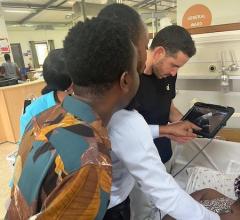
September 23, 2015 — A new guideline aimed at helping clinicians treat patients with supraventricular tachycardia, or a rapid heart rate, was released Sept. 23 by the American College of Cardiology, American Heart Association and Heart Rhythm Society.
Supraventricular tachycardia is common, with a prevalence of 2.29 per 1,000 persons in the general population. Those who have supraventricular tachycardia without any cardiovascular disease are usually younger compared to those who have cardiovascular disease. Women have twice the risk of developing the condition compared to men, and individuals over the age of 65 have five times the risk compared to younger individuals. Supraventricular tachycardia can impact quality of life depending on frequency, duration and whether symptoms occur not only when exercising but also while at rest.
A diagnosis of supraventricular tachycardia is often made in the emergency department. A 12-lead electrocardiogram during tachycardia and sinus rhythm may help to determine the cause of tachycardia.
“The overall goal of the guideline is to provide clinicians with the tools needed to successfully diagnose and treat patients with supraventricular tachycardia upon presentation in the inpatient or outpatient setting,” said Richard L. Page, M.D., FACC, FAHA, FHRS, chair of the department of medicine at the University of Wisconsin and chair of the writing committee. “This includes quick diagnosis and treatment, making any necessary referrals to cardiology and electrophysiology specialists, discussion and collaboration with the patient, and the prescription of appropriate treatment.”
The guideline also aims to aid clinicians to help patients differentiate between supraventricular tachycardia and other disorders, such as panic attack, chest pain, and shortness of breath and syncope or near syncope— or a loss of consciousness due to a drop in blood pressure— that may cause similar symptoms.
The complete 2015 ACC/AHA/HRS Guideline for the Management of Adult Patients With Supraventricular Tachycardia, was jointly published online in the Journal of the American College of Cardiology, Circulation, and HeartRhythm.
It is important to note that while atrial fibrillation is a supraventricular tachycardia, the term does not usually refer to atrial fibrillation. This guideline is for the management of all types of supraventricular tachycardia other than atrial fibrillation. Atrial fibrillation is addressed in the 2014 ACC/AHA/HRS Guideline for the Management of Atrial Fibrillation.
For more information: www.acc.org, www.heart.org, www.hrsonline.org


 November 12, 2025
November 12, 2025 









